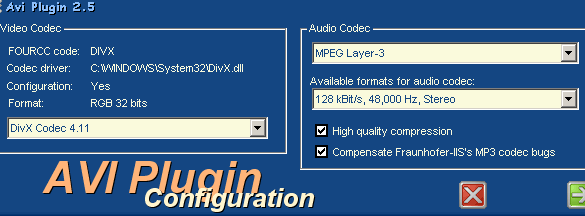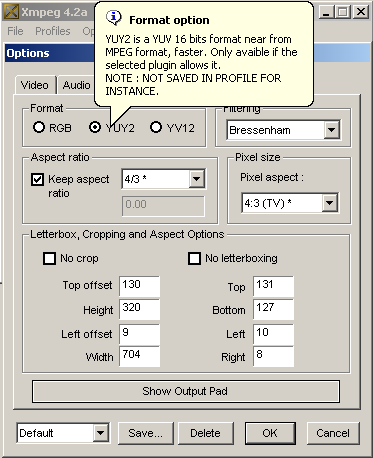Faster Than Real-Time: MPEG-4 Encoding With DivX 4.11
YUV Color Space Faster Than RGB
The reason why YUV boosts performance is easy to explain - the vast majority of DVDs retailed these days already store information in YUV color space. Thus, converting from MPEG-2/YUV to MPEG-4/YUV saves precious processing time in comparison to the classic FlaskMPEG procedure. Unfortunately, FlaskMPEG 0.6, the old standard, only offers RGB as a target color space. And using RGB implies that, in addition to converting the image data, the color space has to be converted also, from YUV to RGB. This latter step is almost always unnecessary when converting from MPEG-2/YUV to MPEG-4/YUV.
Flask XMPEG 4.2a: Step In The Right Direction
On the left, the settings for the video compressor. On the right, those for the audio codec.
The originalFlaskMPEG 0.6 developed by Alberto Vigata was last updated on March 6, 2001. It was then taken and developed further by programmers from the French website www.mp3guest.com (information appears in English, too), and now bears the name XMPEG 4.2a. Flask XMPEG 4.2a's design fits in seamlessly with the Windows XP look. The pre-installed AVI plug-in can also be accessed from other applications, such as Pinnacle Studio 7. Please note, however, that if you rely on Microsoft's MP3 encoder, the bit rate will max out at 56 kBit/s, whereas if you install the radium codec (ra-codec12.zip ), your bit rate can break the 128 kBit/s barrier.
The YUV2 option presents a revolutionary change in XMPEG 4.2a. Once activated, this option dramatically pumps up the encoding speed for DVD rips. Although previously only available in less-developed tools, YUV seems to be undergoing a renaissance in popular software applications.
Get Tom's Hardware's best news and in-depth reviews, straight to your inbox.
Current page: YUV Color Space Faster Than RGB
Prev Page DVD2AVI 1.76 - Robust And Fast, But Rough At The Edges Next Page Flask XMPEG 4.2a, Continued

